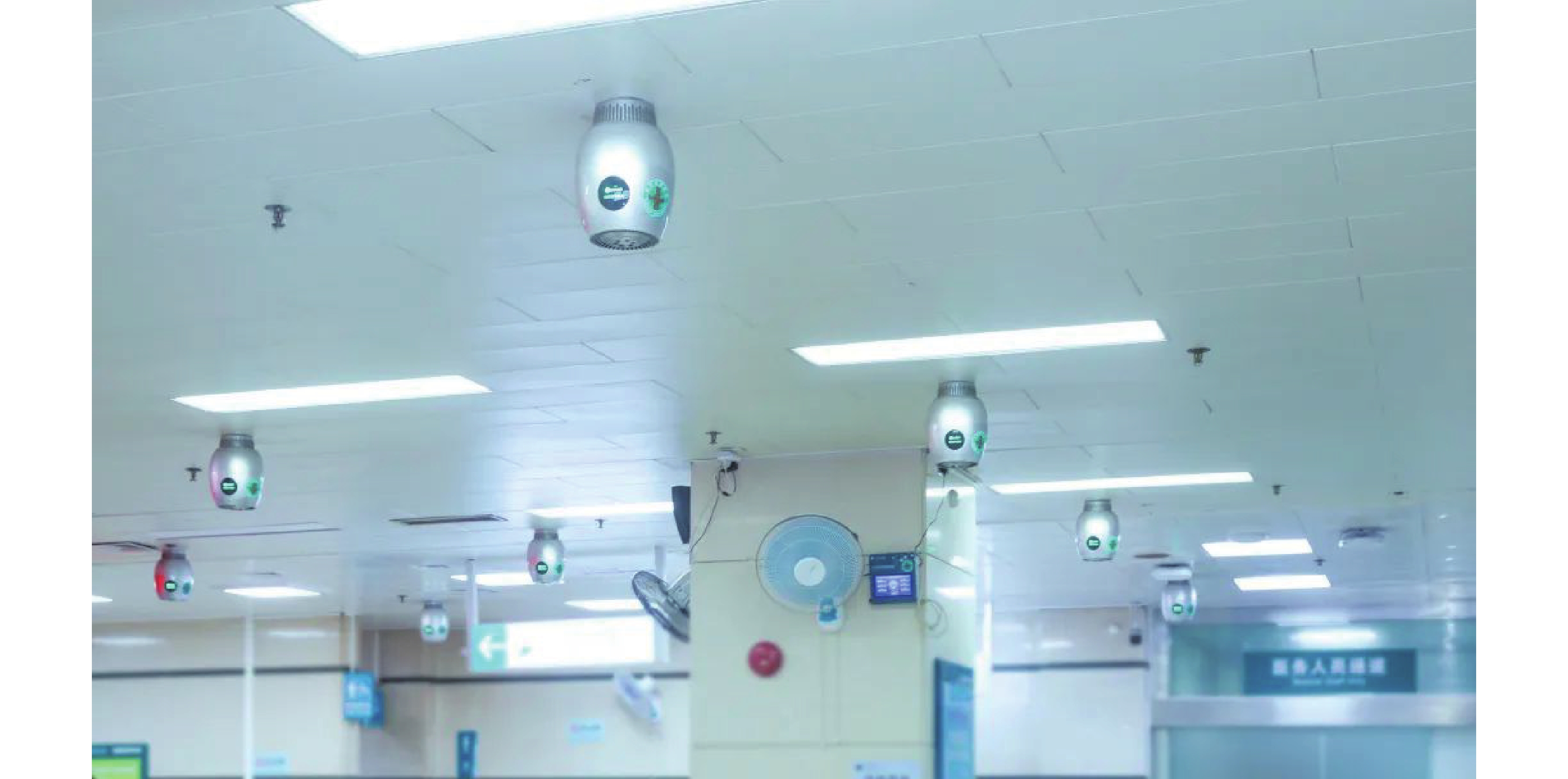-
Hospital-acquired infection (HAI), or healthcare-associated infection, is a significant global health concern linked to increased morbidity and socioeconomic burden (1). The coronavirus disease 2019 (COVID-19) pandemic has highlighted the importance of addressing HAI, with reported rates ranging from 8.3% to 23.4% (2). HAI, including COVID-19, primarily spread through airborne and contaminated surface routes (3). Pathogens can persist in hospital environments for extended periods, with some resistant microorganisms surviving for years (4). Traditional cleaning methods often struggle to eliminate these pathogens effectively (5). Research has shown that even after four rounds of bleach disinfection, around 26.6% of hospital rooms remained contaminated (6). Therefore, adopting new technologies to maintain a safe hospital environment and improve indoor air quality (IAQ) is crucial for HAI prevention and control (7).
In an effort to enhance the control of HAI, particularly in the post-COVID era, Guangdong Second Provincial General Hospital (GD2H) has introduced a novel management system called the Intelligent Forest Hospital (IFH). Drawing on advancements in artificial intelligence (AI), 5G technology, and cloud networking that have been effectively integrated into hospital operations at GD2H (8–10), the IFH has been tailored to manage IAQ in various medical settings. This system involves the deployment of specialized disinfection equipment and air purification terminals in areas such as delivery rooms, operating rooms, intensive care units, respiratory and infection wards, and emergency departments — locations where the risk of HAI for both healthcare staff and patients is notably high.
While cleaning is crucial for preventing HAI, it is essential to consider hospital design, disinfection practices, and surface composition. GD2H utilizes various intelligent equipment categorized into disinfection [e.g., negative air ion (NAI) generator, plasma air sterilizer, ultraviolet sterilizer], surface composition (e.g., antibacterial coating, antibacterial fabric), and detection (e.g., microbial detection system). This combination effectively inhibits pathogens and controls IAQ parameters such as CO2 levels, formaldehyde, PM2.5, and particle mass concentration. In the outpatient hall of GD2H, where over 5,000 patients are served daily, around 60 air purification devices have been installed, including ceiling oxygen equipment, disinfection lamps, and plasma disinfection machines (Figure 1). The NAI concentration in the hospital reaches forest environment standards (>3,000/cm3), with some areas exceeding 100,000/cm3. Forest environments have high NAI concentrations known to benefit human health, including mental health, cognitive and cardiorespiratory function (11–13), which inspired the IFH concept to create a safe and comfortable environment similar to a forest sanatorium.
In 2020, GD2H collaborated with Huawei to develop the Hospital Intelligent Data Twins, which are essentially digital twins within the framework of Industry 4.0. These twins function as an integrated system to facilitate the seamless exchange of digitalized and visualized data. At the core of the Intelligent Data Twins lies cloud services that leverage AI techniques to enhance data utilization (10). All data gathered by the intelligent equipment at GD2H are concurrently transmitted to a virtual cloud platform within the hospital premises for IAQ monitoring and management. The central management hub, serving as the hospital’s smart brain, continuously monitors IAQ across all areas of GD2H round the clock. By harnessing AI, 5G technology, cloud services, and a virtual platform, the Intelligent Data Twins effectively process and receive vast amounts of data from all intelligent equipment, transmitting this information to the cognitive center for real-time IAQ visualization at GD2H (10). The primary interface of the cognitive center exhibits a dynamic 3D model diagram of the hospital, providing real-time monitoring of critical IAQ parameters such as pathogenic microorganisms, carbon dioxide, formaldehyde, PM2.5, and negative ions (Figure 2). Moreover, the cognitive center conducts a comprehensive analysis of the continuously updated real-time data, evaluating HAI risks from various sources. It generates a risk ranking index for clinical departments on screen, enabling prompt risk alerts and initiating automated disinfection measures when necessary. For example, upon detecting abnormal IAQ parameters in infection wards, the cognitive center promptly assesses the situation and triggers the automatic disinfection equipment in the affected area. Simultaneously, it communicates the IAQ status to the nurse stations in the infected wards to inform healthcare providers and patients about potential contamination and the ongoing automated disinfection process.
 Figure 2.
Figure 2.The dynamic 3D hospital model diagram displaying real-time monitoring of key indoor air quality parameters on the main screen of the smart brain.
There are various challenges that need attention in the integration of IFH using technologies like AI and 5G. These challenges include the high costs and energy consumption, the absence of medical standards and regulations, ethical concerns regarding patient privacy, societal acceptance, real-time monitoring difficulties, and the general applicability of 5G and virtual cloud platforms. The IFH requires enhancements such as regular system updates for real-time data processing, improved data privacy and security measures, and further assessments of costs and benefits. Specific training and adjustments are necessary to ensure the system’s effectiveness in various contexts and to improve its generalizability. Despite these challenges, integrating IFH with AI and 5G technologies shows promise in enhancing the prevention and management of HAI, particularly in the context of post COVID-19 and future pandemics, aiming to create a safe and pleasant environment for patients, hospital staff, and visitors.
HTML
| Citation: |





 Download:
Download:




